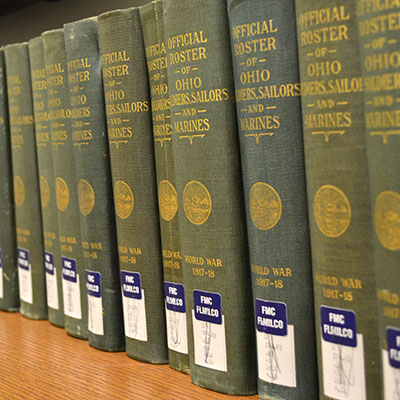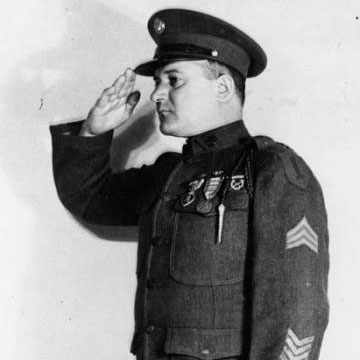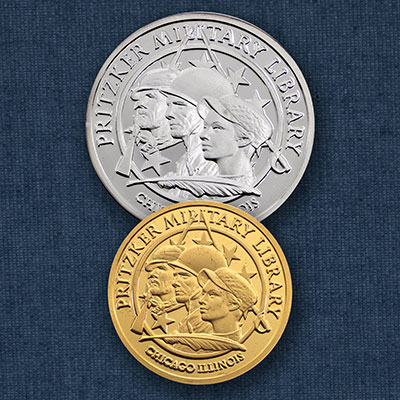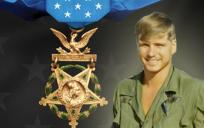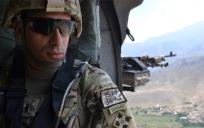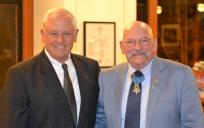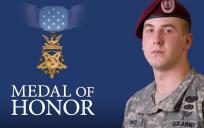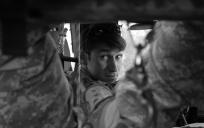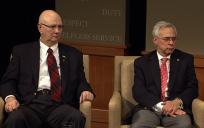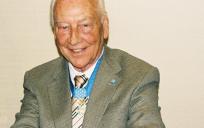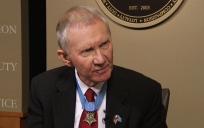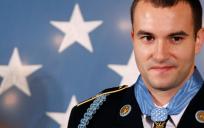
Record date:
Medal of Honor Recipient Roger H.C. Donlon Interview
Roger Donlon served 32 years of his life in uniform rising to the rank of colonel. A leader in so many ways, he was the first Medal of Honor recipient of the Vietnam War, the first Green Beret to receive such recognition. He will visit the Pritzker Military Museum & Library for a special presentation of the Medal of Honor Series with Ed Tracy.
Donlon, then a captain and commanding the U.S. Army's Special Forces Team A-726 at the Camp Nam Dong, 32 miles west of Da Nang near the Laotian border. It was manned by 311 South Vietnamese personnel with the American Green Berets as advisors. In the early morning darkness of July 6, 1964, more than 900 Viet Cong soldiers attacked Nam Dong with mortars, grenades, small arms fire and automatic weapons. The attack was determined and relentless. Many of the South Vietnamese defenders were wounded in the fierce fighting The Special Forces advisors were in the thick of the fighting and two members of Team A-726 died, and Donlon was wounded four times in the five-hour long attack.
Military service was almost a tradition in the Donlon family, where the patriarch was a World War I veteran. All his brothers served, one of them wounded in action. President of his high school junior class and a stand-out athlete, Roger joined the Air Force in 1953, then attended the US Military Academy at West Point for nearly two years. In 1959 he was commissioned as an infantry officer after graduating from Officer Candidate School at Fort Benning, Georgia. From there he attended airborne training and the US Army Special Warfare School at Fort Bragg. He became a Special Forces officer and by 1964 Donlon, commanded now a twelve man A-Team stationed in Vietnam.
His Citation Reads:
For conspicuous gallantry and intrepidity at the risk of his life above and beyond the call of duty while defending a U.S. military installation against a fierce attack by hostile forces. CPT Donlon was serving as the commanding officer of the U.S. Army Special Forces Detachment A-726 at Camp Nam Dong when a reinforced Viet Cong battalion suddenly launched a full-scale, predawn attack on the camp. During the violent battle that ensued, lasting five hours and resulting in heavy casualties on both sides, CPT Donlon directed the defense operations in the midst of an enemy barrage of mortar shells, falling grenades, and extremely heavy gunfire. Upon the initial onslaught, he swiftly marshaled his forces and ordered the removal of the needed ammunition from a blazing building. He then dashed through a hail of small arms and exploding hand grenades to abort a breach of the main gate. En route to this position he detected an enemy demolition team of three in the proximity of the main gate and quickly annihilated them. Although exposed to the intense grenade attack, he then succeeded in reaching a 60mm mortar position despite sustaining a severe stomach wound as he was within five yards of the gun pit. When he discovered that most of the men in this gunpit were also wounded, he completely disregarded his own injury, directed their withdrawal to a location 30 meters away, and again risked his life by remaining behind and covering the movement with the utmost effectiveness. Noticing that his team sergeant was unable to evacuate the gun pit he crawled toward him and, while dragging the fallen soldier out of the gunpit, an enemy mortar exploded and inflicted a wound in CPT Donlon's left shoulder. Although suffering from multiple wounds, he carried the abandoned 60mm mortar weapon to a new location 30 meters away where he found three wounded defenders. After administering first aid and encouragement to these men, he left the weapon with them, headed toward another position, and retrieved a 57mm recoilless rifle. Then with great courage and coolness under fire, he returned to the abandoned gun pit, evacuated ammunition for the two weapons, and while crawling and dragging the urgently needed ammunition, received a third wound on his leg by an enemy hand grenade. Despite his critical physical condition, he again crawled 175 meters to an 81mm mortar position and directed firing operations which protected the seriously threatened east sector of the camp. He then moved to an eastern 60mm mortar position and upon determining that the vicious enemy assault had weakened, crawled back to the gun pit with the 60mm mortar, set it up for defensive operations, and turned it over to two defenders with minor wounds. Without hesitation, he left this sheltered position, and moved from position to position around the beleaguered perimeter while hurling hand grenades at the enemy and inspiring his men to superhuman effort. As he bravely continued to move around the perimeter, a mortar shell exploded, wounding him in the face and body. As the long awaited daylight brought defeat to the enemy forces and their retreat back to the jungle leaving behind 54 of their dead, many weapons, and grenades, CPT Donlon immediately reorganized his defenses and administered first aid to the wounded. His dynamic leadership, fortitude, and valiant efforts inspired not only the American personnel but the friendly Vietnamese defenders as well and resulted in the successful defense of the camp. CPT Donlon's extraordinary heroism, at the risk of his life above and beyond the call of duty are in the highest traditions of the U.S. Army and reflect great credit upon himself and the Armed Forces of his country.
